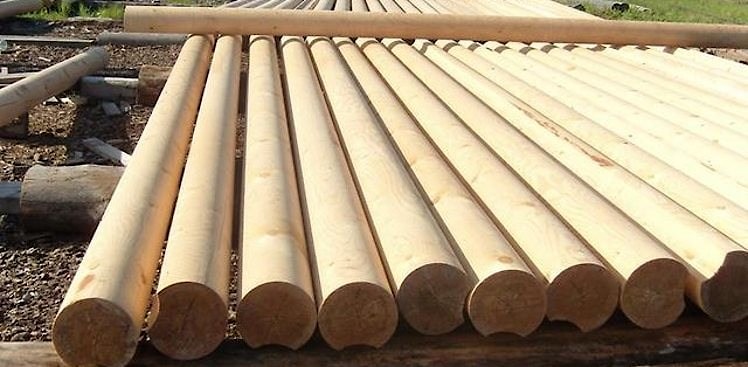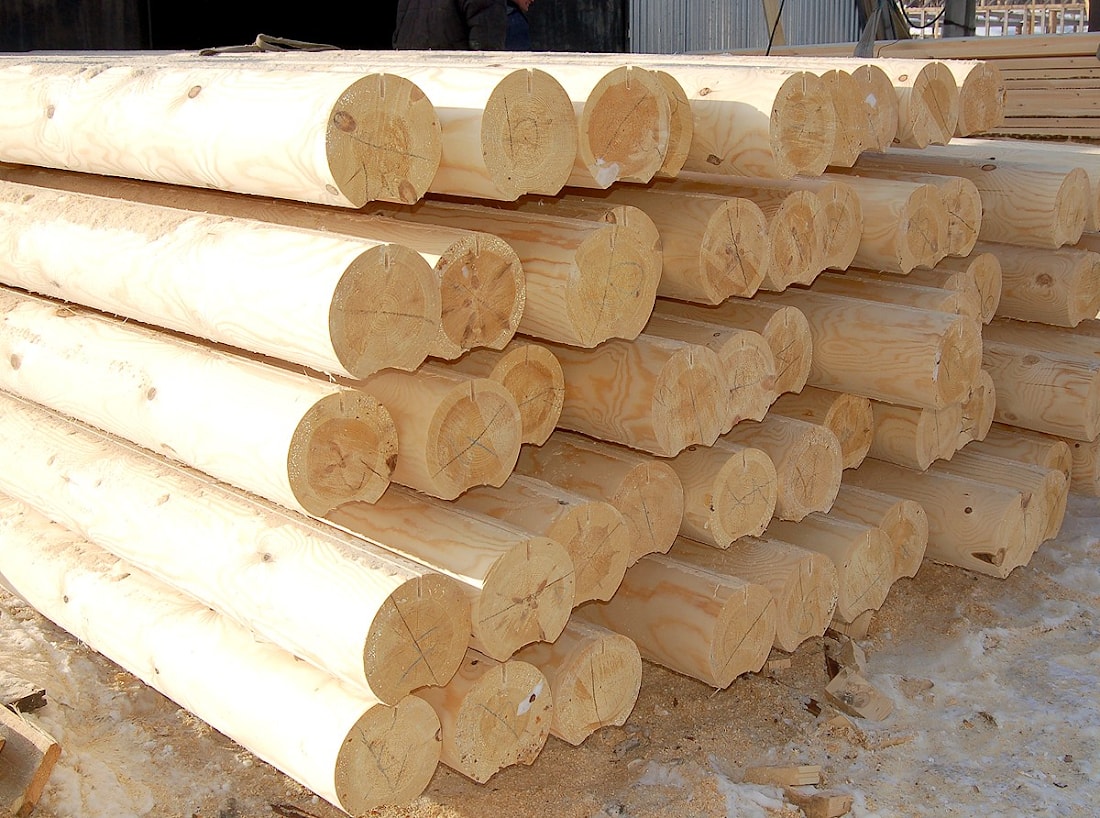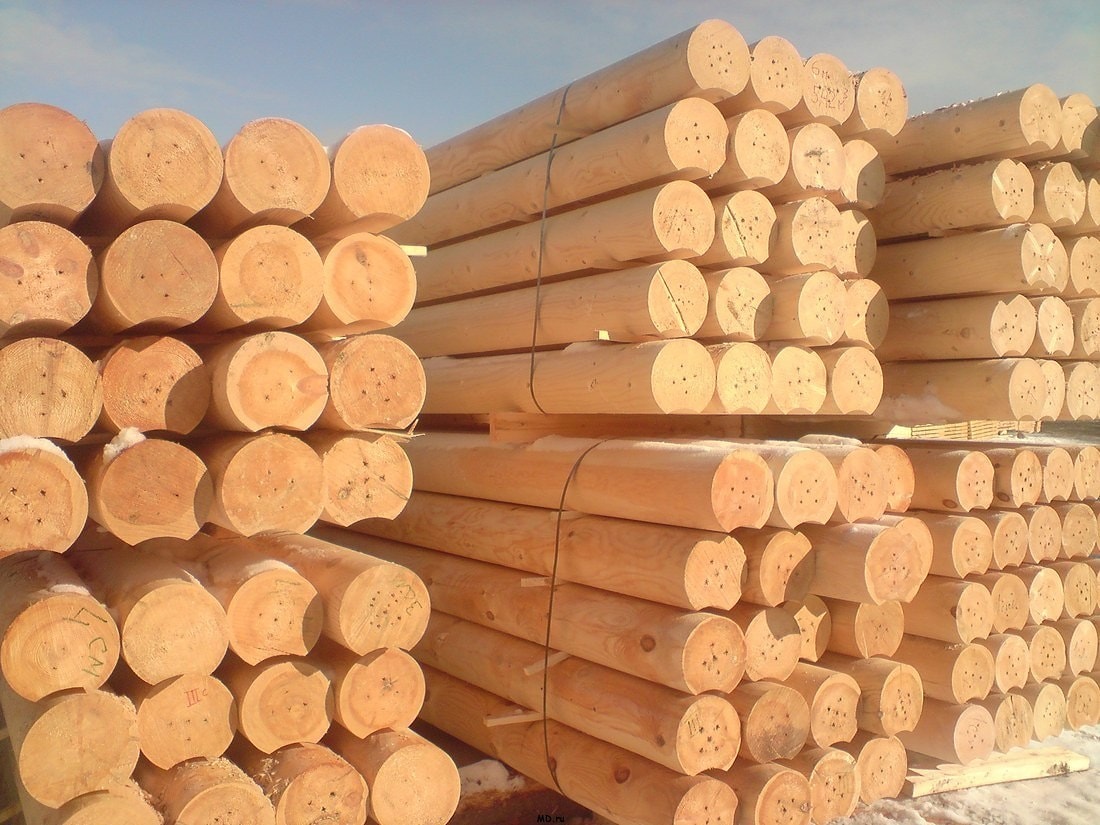≡ Menu
|
|
Wood main chemical properties
Wood main chemical propertiesWood consists mainly of organic substances (99% of the total mass). Elemental chemical composition of wood of different breeds is practically the same. Absolutely dry wood on average contains 49% of carbon, 44% of oxygen, 6% of hydrogen, 0.1-0.3% of nitrogen. When burning wood remains its inorganic part - ash. The composition of the ash includes calcium, potassium, sodium, magnesium and other elements.The listed chemical elements form the basic organic substances: cellulose, lignin and hemicelluloses. Cellulose is a natural polymer, a polysaccharide with a long chain molecule. The cellulose formula (C6H10O5) n, where n is the degree of polymerization, is 6000-14000. This is a very persistent substance, insoluble in water and ordinary organic solvents (alcohol, ether, etc.), white. Beams of macromolecules of cellulose - the finest fibers are called microfibrils. They form the cell wall of the cell wall. Microfibrils are oriented mainly along the long axis of the cell, between them is lignin, hemocelluloses, and water. Lignin is a polymer of an aromatic nature (polyphenol) of complex structure; contains more carbon and less oxygen than cellulose. It is with this substance that the process of lignification of the young cell wall is associated. Lignin is chemically unstable, easily oxidized, reacts with chlorine, dissolves when heated in alkalis, aqueous solutions of sulfuric acid and its acid salts. Hemicellulose is a group of polysaccharides, which includes pentosans (C5H8O4) n and hexosans (C6H10O5) n. At first glance, the hexo-form formula is identical to the cellulose formula. However, the degree of polymerization in all hemicelluloses is much smaller and amounts to 60-200. This indicates a shorter chain of molecules and a lower resistance of these substances compared to cellulose.  In addition to basic organic substances, wood contains a relatively small amount of extractive substances (tannins, resins, gums, pectins, fats, etc.) soluble in water, alcohol or ether. As raw materials, wood is consumed by three branches of the chemical industry: pulp and paper, hydrolysis and wood chemical industry. The pulp and paper industry produces pulp for paper, cardboard and a variety of cellulose materials (cellulose derivatives), as well as wood fiber boards. Based on the high chemical stability of cellulose, by the action of various agents, less stable substances accompanying it are transferred to the solution. There are three groups of methods for the industrial production of cellulose: acidic, alkali and neutral. The choice of this or that method depends mainly on the rock composition of the processed wood raw materials. The group of acidic methods include sulfite and bisulphite. In the sulphite process, the wood of small spruce conifers (spruce, fir) and a number of hardwoods is used as a raw material. The bisulphite method makes it possible to use wood of almost any kind for the production of cellulose. To the group of alkali methods are sulphate and neutral. The most widely used sulfate method. Chopping is carried out in a solution of sodium hydroxide and sodium sulphide. The sulphate method makes it possible to obtain stronger fibers. Advantages of this method include a shorter duration of cooking, as well as the ability to carry out the process in a closed circuit (by regenerating the liquor), which reduces the risk of contamination of water bodies. In this way, more than half of the pulp produced in the world is produced, since it allows the use of wood of any kind.  Neutral - a method of obtaining cellulose from hardwood, in which the cooking liquor contains substances (monosulfites) having a reaction close to neutral. Derivatives of cellulose are widely used. In the interaction of cellulose with solutions of caustic soda, nitric and sulfuric acids or acetic anhydride, artificial fabrics (staple, viscose and acetate silk), cord fiber for the manufacture of automobile and aircraft tires, cellophane, celluloid, film and photographic film, nitrocellulose, nitrocellulose and other products. The interaction of aqueous solutions of acids with wood leads to the hydrolysis of cellulose and hemicelluloses, which turn into simple sugars (glucose, xylose, etc.). These sugars can be subjected to chemical processing, obtaining xylitol, sorbitol and other products. However, the hydrolysis industry is mainly oriented towards the subsequent biochemical processing of sugars. The hydrolysis reaction occurs at a rather high temperature (150-190 ° C). When the hydrolyzate (an aqueous solution of simple sugars) is cooled, vapors are formed, from the condensate of which furfural is produced. It is used in the production of plastics, synthetic fibers (nylon), resins, the manufacture of medicines (furatsilina, etc.), dyes and other products. With further processing of the hydrolyzate, fodder yeast, ethyl alcohol (ethanol), carbon dioxide are obtained. Ethanol is produced only from coniferous wood, used as a solvent and, increasingly, as fuel. When heating wood without access to air, pyrolysis takes place. As a result of pyrolysis, coal, zizka (liquid) and gases are formed. Charcoal, characterized by high sorption capacity, is used for cleaning industrial solutions, wastewater, in the production of sugar, in the smelting of non-ferrous metals, in the manufacture of medical preparations, semiconductors, electrodes and for many other purposes. Zizka is a solution of decomposition products used in the production of antiseptics, phenols, acetic acids. The gases formed during pyrolysis of wood are used as fuel. In addition to low-quality wood, raw materials for the wood-chemical industry are extractive substances. The extraction of resin (gum) from conifers is achieved by means of a tap. To do this, on the surface of the trunks of pine or cedar, a special wound (carra) is applied in the fall, from which the gum flows into the conical receiver. Gum processing is carried out in wood-chemical plants, where steam distillation of the volatile part - turpentine and roast rosin takes place. Turpentine is widely used as a solvent in the paint and varnish industry for the production of synthetic camphor. Camphor is used in the production of cellulose, lacquers and film. Rosin is used in the production of rubber, paper, nitrocellulose, electrical insulating materials, etc. Tannins are used for making leathers are obtained from bark of willow, spruce, larch, fir, and also from oak and chestnut wood. Mobile wooden house, project "Pine" price 14.300 €Mobile wooden house "White Forest" price 33.300 €Express flower delivery in Minsk, Belarus |
|
© 2024
ArchiLine Wooden Houses
114-49, Necrasov str., Minsk, Republic of Belarus, 220049
The site is powered by Nestorclub.com | |
 Good Wooden House since 2004
Good Wooden House since 2004




